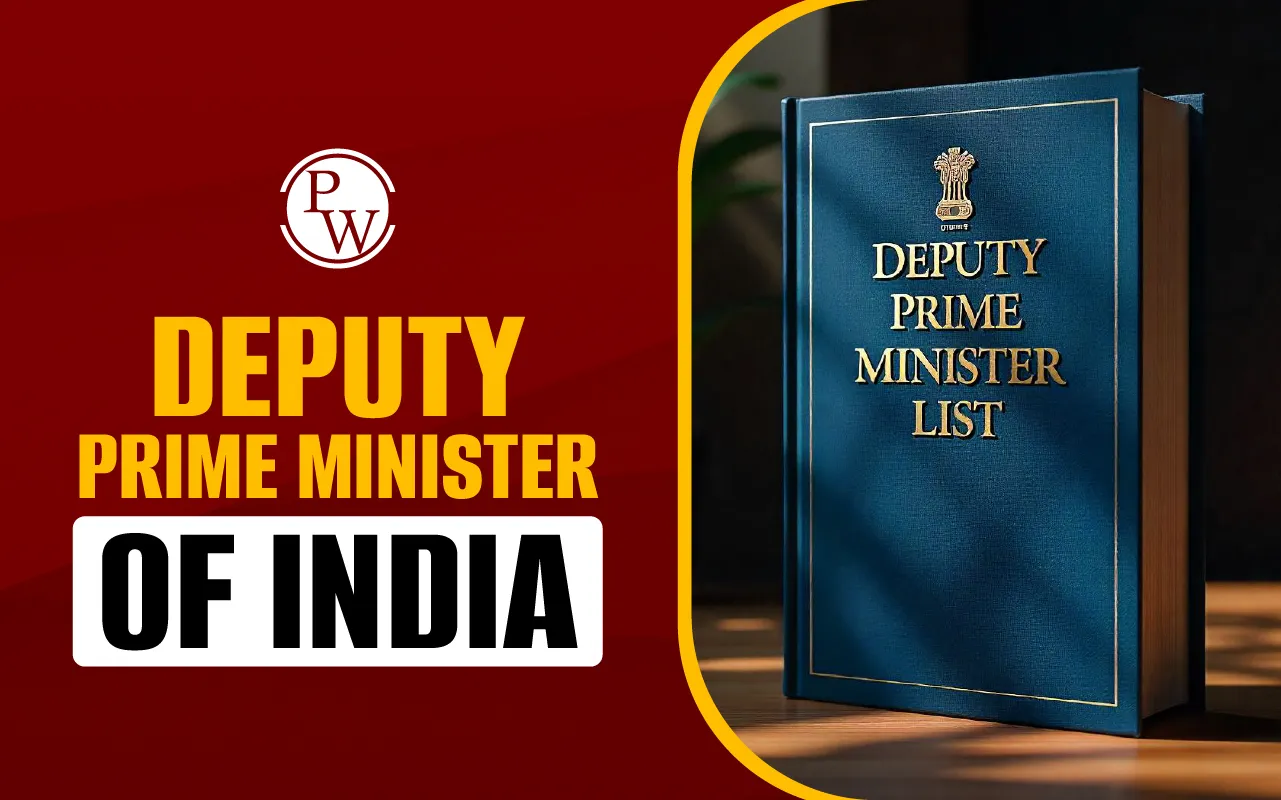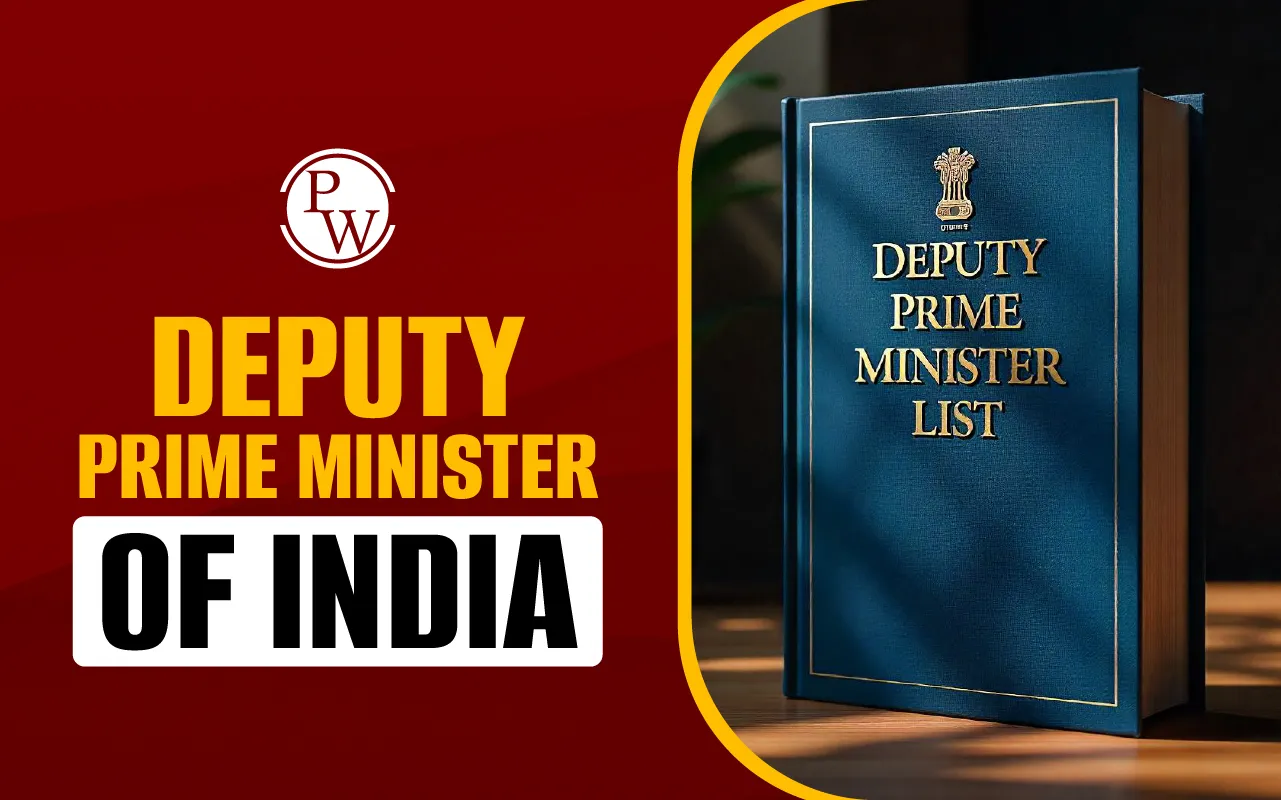

Deputy Prime Minister of India: India has a well-defined political structure, where each leader plays a crucial role in the functioning of the government. One such key post is the Deputy Prime Minister of India. The role of Deputy PM is mostly assigned to assist the Prime Minister and manage important portfolios like Home Affairs, Defence, or Finance. The Deputy Prime Minister post has been unoccupied since May 23, 2004.
Deputy Prime Minister of India
The post of Deputy Prime Minister is not a constitutional office and has been filled at the discretion of the Prime Minister. It is a political designation that has been used at various times since India's independence, primarily to acknowledge the seniority and authority of a cabinet minister.
The Deputy Prime Minister is often seen as the second-in-command in the Cabinet, just after the Prime Minister. Though the Deputy Prime Minister of India does not have any specific duties mentioned in the Constitution, the position carries both political and administrative influence. The main function of the Deputy PM is to support the Prime Minister and take charge of important ministries.
The post of Deputy PM becomes more relevant in coalition governments, where it helps to maintain political balance among alliance partners and also acts as a backup leader if the PM is unavailable due to travel or illness.
First Deputy Prime Minister of India
The first Deputy Prime Minister of India was Sardar Vallabhbhai Patel. He served from 15 August 1947 to 15 December 1950. He was also the first Home Minister of India. Sardar Patel played a crucial role in uniting over 560 princely states into the Indian Union after independence.
As the first Deputy PM of India, Patel was known for his strong leadership and administrative abilities. He was often referred to as the “Iron Man of India” because of his firmness and vision. Under his leadership, the civil services system was restructured, and India’s internal security was firmly established.
List of Deputy Prime Ministers of India
Since independence, only a few leaders have held the post of Deputy Prime Minister of India. Below is a full list of Deputy Prime Ministers of India with their tenure and major portfolios:
| S.No. | Name | Tenure | Political Party | Notable Facts |
| 1 | Vallabhbhai Patel | 15 Aug 1947 – 15 Dec 1950 | Indian National Congress | First DPM; longest-serving; integrated princely states into India |
| 2 | Morarji Desai | 13 Mar 1967 – 19 Jul 1969 | Indian National Congress | Later became PM; known for economic policies |
| 3 | Charan Singh | 24 Jan 1979 – 16 Jul 1979 | Janata Party | Later became PM; advocated agricultural reforms |
| 4 | Jagjivan Ram | 24 Jan 1979 – 28 Jul 1979 | Indian National Congress | Prominent Dalit leader, Minister of Defence |
| 5 | Yashwantrao Chavan | 28 Jul 1979 – 14 Jan 1980 | Indian National Congress (Urs) | Minister of Home Affairs, internal security role |
| 6 | Devi Lal | 2 Dec 1989 – 1 Aug 1990 | Janata Dal | Focused on agricultural reforms |
| 7 | Devi Lal | 10 Nov 1990 – 21 Jun 1991 | Samajwadi Janata Party (Rashtriya) | Second term as DPM |
| 8 | Lal Krishna Advani | 28 Jun 2002 – 22 May 2004 | Bharatiya Janata Party | Oversaw legislative reforms, Home Minister |
| Note: *Charan Singh served as Deputy Prime Minister under Morarji Desai and then became Prime Minister himself, with Jagjivan Ram as his Deputy Prime Minister for a brief period. | ||||
Current Deputy Prime Minister of India
As of now, there is no Deputy Prime Minister in India. The post has remained vacant since 2004, after the UPA government led by Dr. Manmohan Singh came to power. The NDA government under Prime Minister Narendra Modi has not appointed anyone to this position either.
Deputy Prime Minister of India could be appointed in the future, depending on political requirements or power-sharing agreements. For now, the Prime Minister directly supervises all key ministries with the help of Cabinet Ministers.
In conclusion, the Deputy Prime Minister of India is a powerful non-constitutional post that has been used throughout history for both administrative support and political strategy. From Sardar Vallabhbhai Patel to L. K. Advani, each leader brought their own strengths to the role.
Deputy PM vs Vice Prime Minister (Difference Explained)
The term Deputy Prime Minister is an official political designation occasionally used in India, while Vice Prime Minister is not an official title in the Indian government. The Constitution does not mention either post, but “Deputy PM” is the term historically used to denote the senior-most cabinet minister assisting the Prime Minister. “Vice Prime Minister” is simply a popular public usage and has no legal or administrative status.
Deputy PM in Coalition Governments — When Is the Post Used?
The post of Deputy Prime Minister becomes relevant mainly during coalition governments. It is often used to maintain political balance among alliance partners, honour a senior leader, or provide additional leadership support to the Prime Minister. In such governments, the Deputy PM helps coordinate between parties, manage key ministries, and ensure stability, especially when multiple parties share power.
Want to learn more about Indian polity for UPSC? Check out PW’s UPSC Courses and start your preparation today with guidance!
